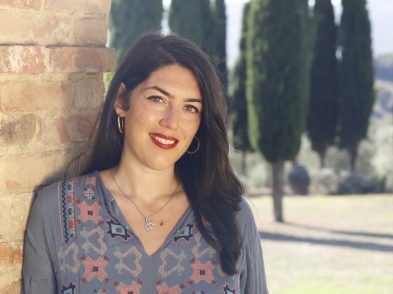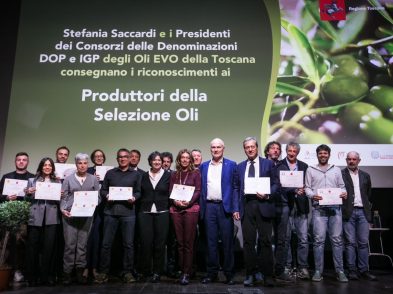The recently released Wonka film rekindled my interest in Tuscany’s “Chocolate Valley”. Sprinkled around Pontedera, 20 kilometres southeast of Pisa, are three premium chocolate factories, all producing bean-to-bar delicacies using the finest cocoa solids originating in the tropics.

Angiolini
Situated on a nondescript industrial estate in Fornacette, young entrepreneur Alex Angiolini warmly waves me into the front office. In 2018, the former professional ballroom dancer decided to open a French-style chocolate shop in Pontedera with his father, Giovanni.
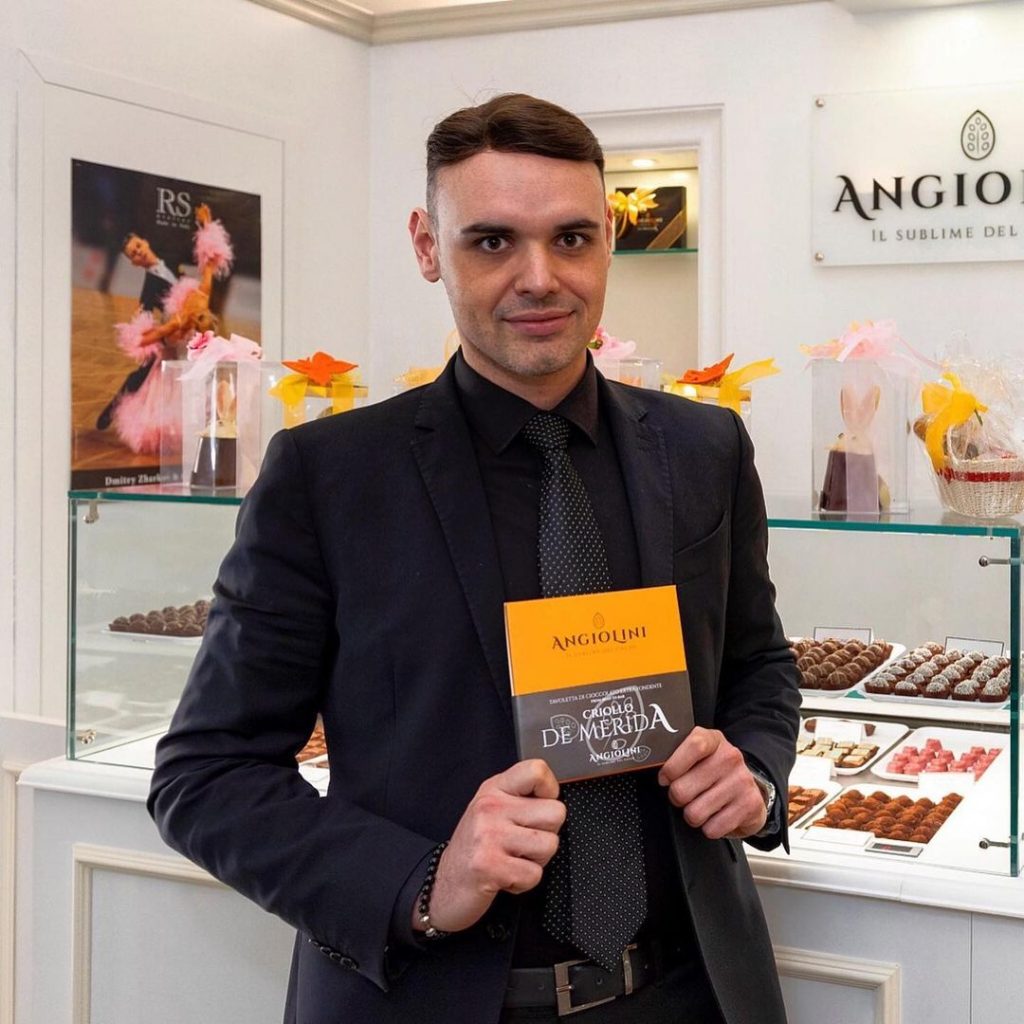
“It took off, and soon gourmet chefs were asking us to supply them.” Giovanni boasts 40 years of experience as a chocolatier, having worked for decades for renowned local artisan company Amedei. The family now exports their confections to six countries, with Japan and the UAE leading the list of gourmands, while Tuscan clients include the three-Michelin-star restaurant Enoteca Pinchiorri in Florence and two-star Principe di Piemonte in Viareggio. “They are looking for a different vision of chocolate,” explains Giovanni. “We share ideas and creativity, like our collaboration with Ducati in which we used cocoa with a reddish colour.”
As we taste Angiolini’s exquisite single-origin bars and subtle pralines (think lavender from the Val di Luce and jasmine in honour of the Medici family gardens), Giovanni explains how his company only works with small Fair Trade cooperatives in nations such as Madagascar, Guatemala and Padua New Guinea. “We go there because the cooperatives can help the grower by putting guidelines in place.”

While tasting the purest and rarest cocoa, Criollo, which accounts for just one per cent of the world’s production, the confectioner points out the lighter hue caused by the bean’s naturally white colour. (The label states that this is bar 1548 out of 2000 made.) Letting a small square of chocolate melt on the tongue with the body’s heat, pineapple flavours can be discerned in the Colombian Criollo, while the Venezuelan version has a smoky tobacco complexity felt on the roof of the mouth.

Angiolini prides itself on its involvement of quality Tuscan purveyors of other pure produce. A partnership with Sale di Volterra, the subterranean saline near the town famous for alabaster, has resulted in a convincing range in which the chocolate accentuates the salt and vice versa. The factory itself is a small-scale operation and Easter eggs are in the works on the day I visit. Firstly, we peer into a side room with a couple of jute sacks. (The remainder is stored in a warehouse in Livorno.) Picking up a guillotine-like device lined with bean-shaped grooves, this is the cut test used by chocolate makers to sample the batches of cacao and ensure the quality. The next stage in the process is small-batch roasting, which, like coffee, is conducted using hot air instead of a direct flame. (“The aroma tells us how much roasting is required; it’s based on experience.”) Giovanni describes how the winnower machine separates the nibs from the husks before being ground with a stone cylinder to refine the chocolate paste and conching takes place “to remove excessive acidity”. Tempering by machine or by hand concludes the process, which is essential to achieve that snap that is the benchmark upon breaking a quality chocolate bar.
Amedei
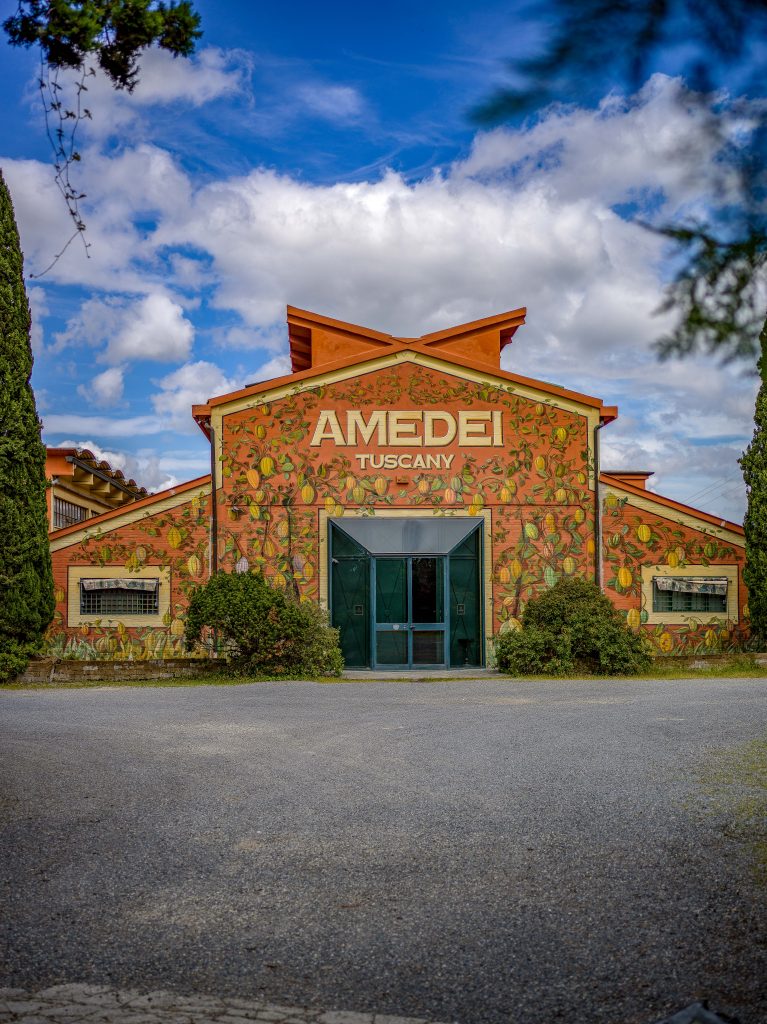
On the other side of Pontedera, set in the countryside, Amedei is the reason why the “chocolate valley” exists. Established in 1990, there’s no mistaking the headquarters: an old foundry whose facade has been painted with cacao cabosses, in addition to the company name and Tuscany in block capitals. Given that Amedei was acquired by the drinks company Ferrarelle in 2017, a corporate greeting awaits within.
Serving 40 countries and having won 90 or more prizes, smoothness and enjoyment are the endgoals. A presentation takes visitors through Amedei’s approach, detailing the use of all three kinds of cacao: Criollo, Trintario and Forestero. A jar containing a Criollo cacao fruit and another showing the seeds are handed to us as we learn how the seeds are fermented in boxes covered with banana leaves for four to five days to reduce the acidity and increase the aromas before being left to dry in the sun. “We like to say that the beans travel first class in air-controlled containers on boats to Livorno.”

On arrival, the beans undergo that essential quality cut-test and almost the exact same process begins that I witnessed earlier at Angiolini’s HQ. Donning sterile scrubs for body, hair and feet, we start the Amedei factory tour. Maurizio walks us through the manufacturing phases, from sturdy well-used machinery like the roaster and winnower, reminiscent of a hulking credenza, separating the nibs on the front and the husks to the rear. A separate zone is dedicated to dissolving the cocoa butter and making the liquor, which is fed through a set of rollers to guarantee a smooth product that squashes the chocolate to 12 microns. Mud-like brown splashes on the floors and aprons serve as a reminder that chocolate making, however refined in the end, is an innately messy affair. Basins filled with hot water ensure that the conching continues for up to 72 hours, or as Maurizio explains, “We conch more, in the Amedei style” before the mixture is cooled “to reinforce the cocoa crystals” and made ready for shaping. Another area, closed off to visitors, although we are welcome to gaze through windows, shows staff members checking the quality of milk chocolate and almond Easter eggs as they are turned and dried ahead of the holiday.
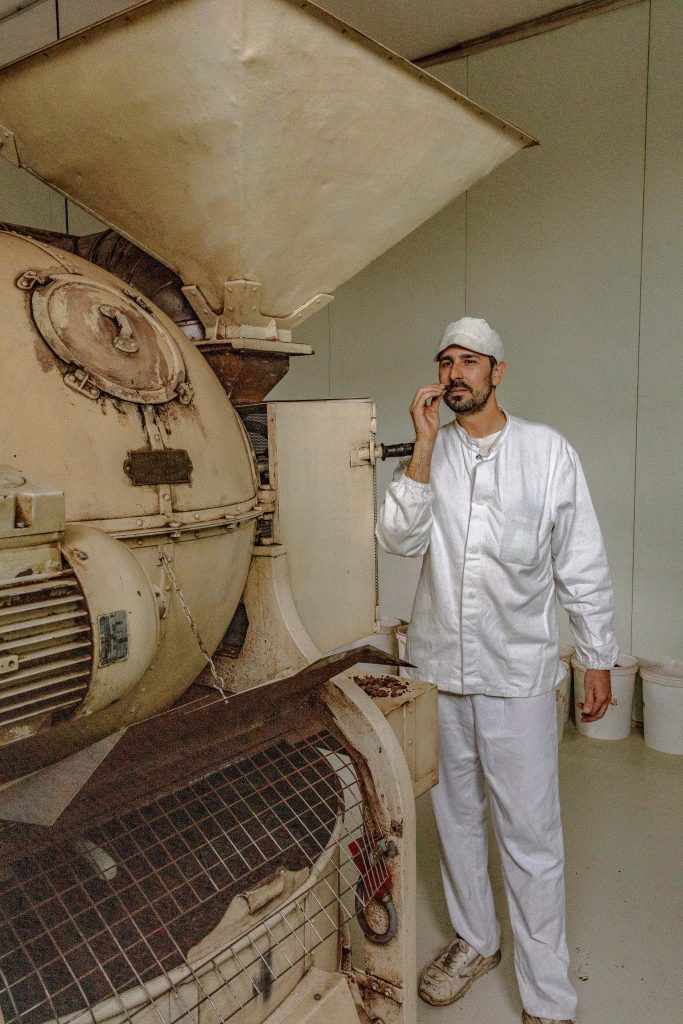

Most striking is the longevity of the company’s employees. At Amedei’s service for 20-plus years, chocolate maker Luca Fiorentini leads the tasting. There’s the iconic Toscano Black 70, a blend of all three cacao types, imbued with tobacco, malt and cedar notes, the apricot and apple nuances of Venezuelan Porcelana, and the characterful Ecuador 77, influenced by some of the banana canopy that is essential to sheltering the cacao tree. To finish, we savour an astonishingly rounded and fully flavoured 100% cocoa mass.
Noalya

Noalya, on an industrial estate near Ponsacco, is a spin-off project belonging to the superlative catering college Scuola Tessieri.
Although the company only took shape in 2018, the founder Alessio Tessieri has owned a plantation in Venezuela for the last 23 years and continues to devote his energy to helping growers. “You have to spend time on the ground,” Alessio remarks, bounding between sales meetings and chef-led masterclasses. Is the cultivation of cacao being affected by climate change? “In general, it’s drier and there’s more rain in the tropics, which increases the tannins. In Congo, I’m helping a grower with his fermentation issues. I’d like cacao to be seen less as a commodity and more as a fruit that should be respected.”

While selling directly to the public, Noalya specializes in producing quality single-origin and blended chocolate with the maximum pliancy for chefs, as well as amenities for hotels, like ingots in a wooden case complete with a Scarperia-crafted knife and spreads for breakfast buffets. Ever creative, Fervolato is the most recent introduction that sees Venezuelan Criollo undergo a second fermentation in Montefalco Sagrantino grape must from Umbria, ensued by separate refinement process in steel tanks, barriques and amphorae.
Marianna Salvini, Alessio’s wife, generously takes the time on a Friday evening to explain how they produce 22 single-origin bars (Esprit Grand Cru) stating the country of origin and 11 blends (Grande Cuvée Character), each of which bears a number. “We take all the aromas and flavours from the land where the cacao is cultivated. That’s the Noalya method.”

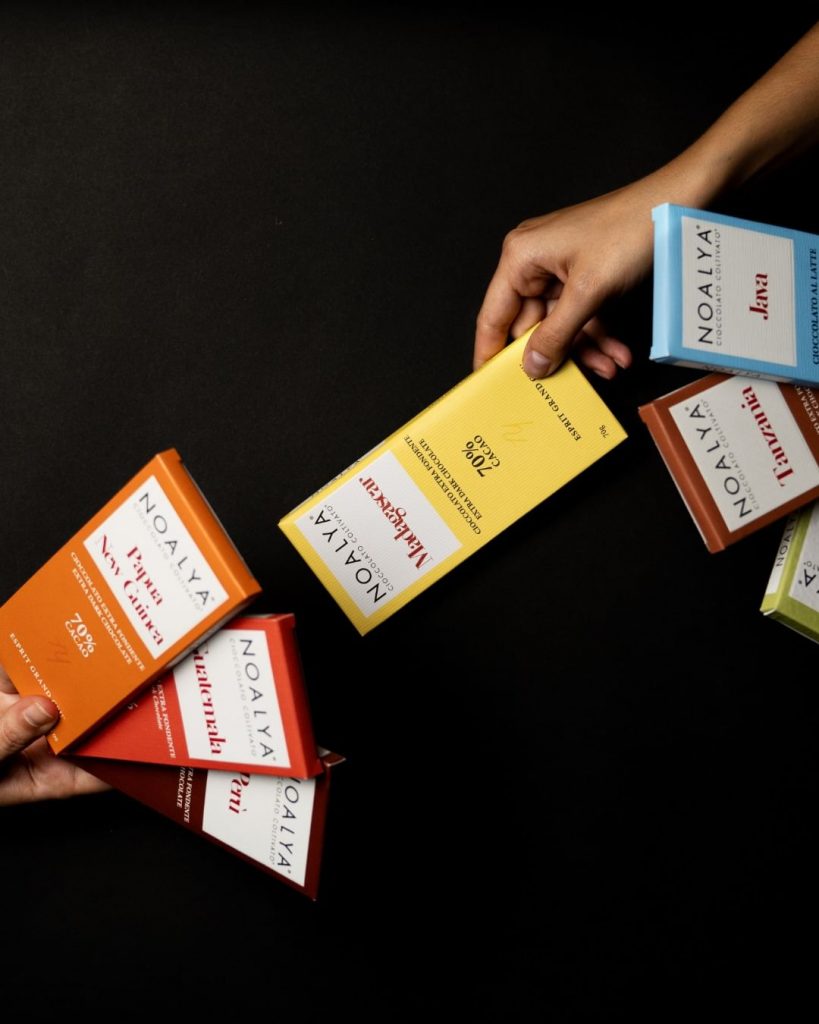
The manufacturing takes place in a factory around the corner, where industrial secrets are in play, given Alessio’s years of experimentation and experience. (He co-founded Amedei in 1990 and left due to the buyout.) Here in the coffee shop/canteen/social area next to the multi-functional space where chocolatiers hone their craft, learning how to make a chocolate sculpture in 10 days, I taste the perfectly balanced Porcelana from Tessieri’s Venezuelan plantation, a reddish and redcurrant-y single-origin from Madagascar and the 309 blend, all liquorice, coffee and smoke.
Tasting chocolate around Pontedera is an edifying experience. Just maybe don’t taste them all in one day.
Visit the Angiolini chocolate shop in corso G. Matteotti 94, Pontedera (open daily 4-8pm) and the Noalya shop at Scuola Tessieri in via Milano 24, Ponsacco (open Mon-Fri 3-6pm). Visitors can book a tour of the Amedei chocolate factory online.


